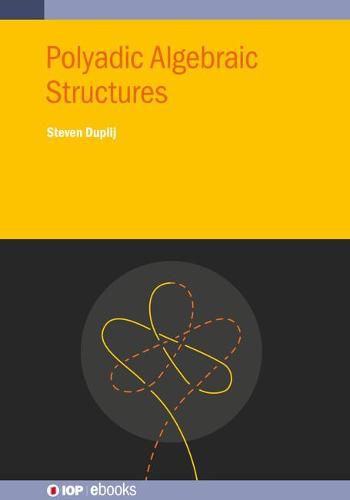Readings Newsletter
Become a Readings Member to make your shopping experience even easier.
Sign in or sign up for free!
You’re not far away from qualifying for FREE standard shipping within Australia
You’ve qualified for FREE standard shipping within Australia
The cart is loading…






This title is printed to order. This book may have been self-published. If so, we cannot guarantee the quality of the content. In the main most books will have gone through the editing process however some may not. We therefore suggest that you be aware of this before ordering this book. If in doubt check either the author or publisher’s details as we are unable to accept any returns unless they are faulty. Please contact us if you have any questions.
The book is devoted to the thorough study of polyadic (higher arity) algebraic structures, which has a long history, starting from 19th century. The main idea was to take a single set, closed under one binary operation, and to generalize it by increasing the arity of the operation, called a polyadic operation. Until now, a general approach to polyadic concrete many-set algebraic structures was absent. We propose to investigate algebraic structures in the concrete way and provide consequent polyadization of each operation, starting from group-like structures and finishing with the Hopf algebra structures. Polyadic analogs of homomorphisms which change arity, heteromorphisms, are introduced and applied for constructing unusual representations, multiactions, matrix representations and polyadic analogs of direct product. We provide the polyadic generalization of the Yang-Baxter equation, find its constant solutions, and introduce polyadic tensor categories.
Suitable for university students of advanced level algebra courses and mathematical physics courses.
Key Features
Provides a general, unified approach
Widens readers perspective of the possibilities to develop standard algebraic structures
Provides the new kind of homomorphisms changing the arity, heteromorphisms, are introduced and applied for construction of new representations, multiactions and matrix representations
Presents applications of
polyadization approach to concrete algebraic structures
$9.00 standard shipping within Australia
FREE standard shipping within Australia for orders over $100.00
Express & International shipping calculated at checkout
This title is printed to order. This book may have been self-published. If so, we cannot guarantee the quality of the content. In the main most books will have gone through the editing process however some may not. We therefore suggest that you be aware of this before ordering this book. If in doubt check either the author or publisher’s details as we are unable to accept any returns unless they are faulty. Please contact us if you have any questions.
The book is devoted to the thorough study of polyadic (higher arity) algebraic structures, which has a long history, starting from 19th century. The main idea was to take a single set, closed under one binary operation, and to generalize it by increasing the arity of the operation, called a polyadic operation. Until now, a general approach to polyadic concrete many-set algebraic structures was absent. We propose to investigate algebraic structures in the concrete way and provide consequent polyadization of each operation, starting from group-like structures and finishing with the Hopf algebra structures. Polyadic analogs of homomorphisms which change arity, heteromorphisms, are introduced and applied for constructing unusual representations, multiactions, matrix representations and polyadic analogs of direct product. We provide the polyadic generalization of the Yang-Baxter equation, find its constant solutions, and introduce polyadic tensor categories.
Suitable for university students of advanced level algebra courses and mathematical physics courses.
Key Features
Provides a general, unified approach
Widens readers perspective of the possibilities to develop standard algebraic structures
Provides the new kind of homomorphisms changing the arity, heteromorphisms, are introduced and applied for construction of new representations, multiactions and matrix representations
Presents applications of
polyadization approach to concrete algebraic structures